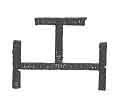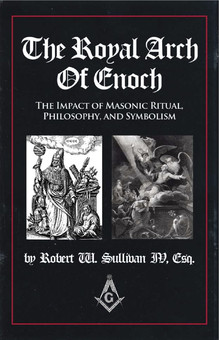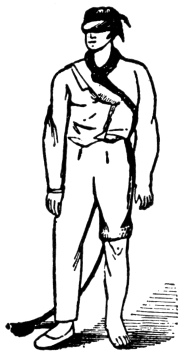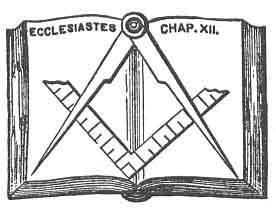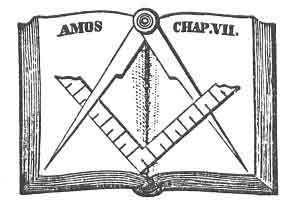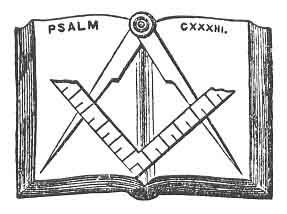A. But behold when I come unto the children of Israel, etc., etc. (Monitorial.)
Q. What answer did you receive from the Captain of the Host?
A. I am that I am, I am hath sent me unto you.
Q. Did you pursue your journey?
A. We did, the rough and rugged paths.
Q. What do the rough and rugged paths denote?
p. 259
A. The sojourning of the children of Israel through the wilderness.
Q. Did you meet with any obstructions?
A. We did, several.
Q. Where did you meet with the first obstruction?
A. At the first veil, where on making the regular demand, we heard the Master of that veil exclaim, “Who dares approach this first veil of our sacred tabernacle?” and he, supposing an enemy to be approaching, hailed his companions, who on being assembled demanded, “Who comes here?”
Q. Your answer?
A. We are of your own brethren and kin–children of the captivity–descendants of those noble Giblemites, we were received and acknowledged Most Excellent Masters at the completion and dedication of the first temple–were present at the destruction of that temple by Nebuchadnezzar, by whom we were carried captives to Babylon, where we remained servants to him and his successors, until the reign of Cyrus, King of Persia, by whose order we have been liberated, and have now come up to help, aid, and assist in rebuilding the house of the Lord, without the hope of fee or reward.
Q. What were you then asked?
A. By what further reward or benefit we expected to obtain this important privilege.
Q. Your answer?
A. By the benefit of the pass.
Q. Give it? (I am that I am, I am hath sent me unto you.)
Q. Did this give you admission?
A. It did within the first veil.
Q. What was then said to you?
A. Good men and true you must have been, to have come thus far to promote so noble and good an undertaking; but further you cannot go without my word, sign, and word of explanation.
Q. What was the word of the Master of the first veil?
A. I am that I am, I am hath sent you unto us, Shem, Ham, and Japheth.
Q. What is his sign?
A. It is in imitation of that given by God to Moses when he was commanded to cast his rod upon the ground, and it be-came a serpent.
Q. What was his word of explanation?
A. It was explanatory of the sign as recorded by Moses, and is as follows. “And Moses answered and said, But behold they will not believe me, nor hearken unto my voice, for they will say,
p. 260
[paragraph continues] The Lord hath not appeared unto thee; and the Lord said unto him, What is that in thine hand, and he said, A rod; and He said, Cast it on the ground. And he cast it on the ground and it became a serpent, and Moses fled from before it; and the Lord said, Put forth thine hand and take it by the tail; and he put forth his hand and caught it, and it become a rod in his hand, that they may believe that the God of their fathers, the God of Abraham, the God of Isaac, and the God of Jacob hath appeared unto thee.
Q. Where did you meet with the next obstruction?
A. At the second veil, where, on making the regular demand, we heard the master of that exclaim as before.
Q. Your answer?
A. As before.
Q. What were you then asked?
A. By what further right or benefit we expected to obtain that important privilege.
Q. Your answer?
A. By the word and sign given us by the master of the first veil.
Q. Did this gain you admission?
A. It did within the second veil.
Q. What was then said to you?
A. Good men and true you must have been, to have come thus far to engage in so noble and glorious an undertaking, but further you cannot go without my word and sign, and word of explanation.

Moe is the founder of GnosticWarrior.com. He is a father, husband, author, martial arts black belt, and an expert in Gnosticism, the occult, and esotericism.

